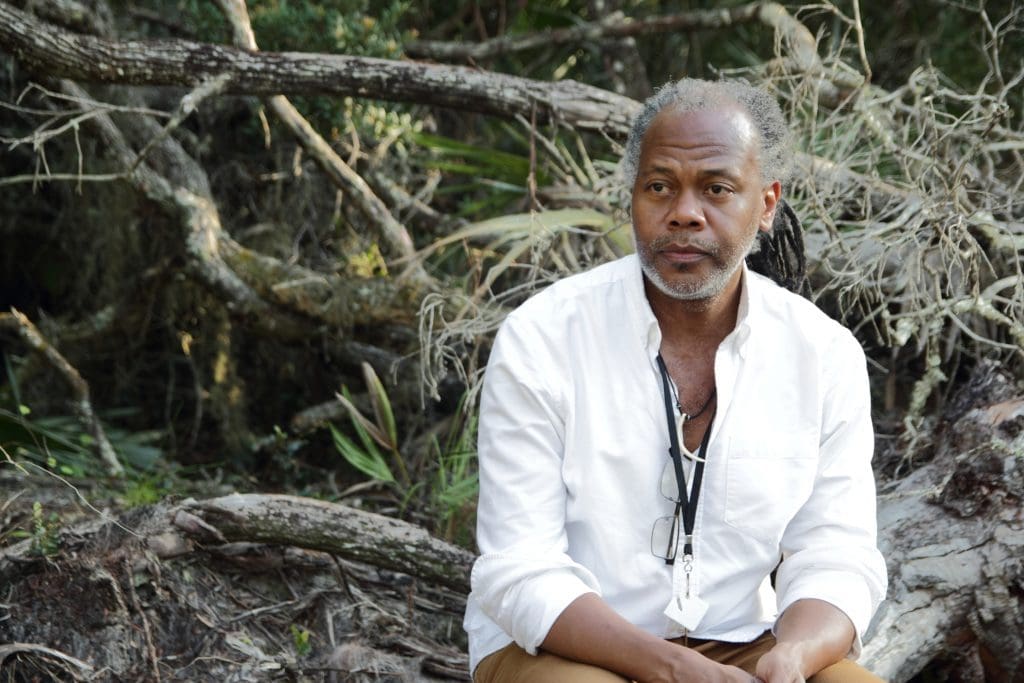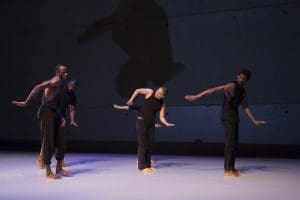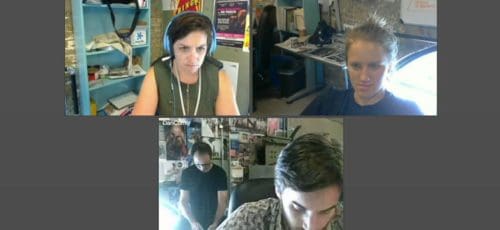Belonging and not wanting to: An interview with Reggie Wilson
Reggie Wilson creates choreography drawing from the spiritual and mundane traditions of Africa and its Diaspora. His company, Fist and Heel Performance Group—described on it’s website as “Not your mama’s post-modern dance company”—derives its name from practices of enslaved Africans in the Americas who reinvented their spiritual traditions into a deep, soulful art form dismissed by overseers as “fist and heel worshipping.” He has lectured, taught, conducted workshops, community projects, and has had his work presented nationally and internationally. He returns to the Fringe Festival this September, premiering his latest work, CITIZEN, as part of our opening night celebration. Reggie spoke with FringeArts earlier this summer about finding inspiration in the life and work of Zora Neale Hurston, his family history, and his travels as well as the evolution of the piece.
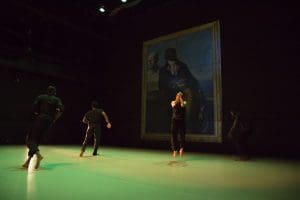 FringeArts: What was the initial inspiration for CITIZEN?
FringeArts: What was the initial inspiration for CITIZEN?
Reggie Wilson: Things were probably brewing before my visit to Paris in January 2014. But that’s when the questioning became more evident. I started thinking there was something to this recurring idea and that I wanted to pursue it. I continue to always be inspired by Zora Neale Hurston, her life and her works. The fact that Zora always came back to America, made her life and work here, even though friends and other artists went to other countries, many to Paris, because they couldn’t, didn’t want to deal with an America that was telling them that they were not wanted, that they were less than.
Around that same time Memphis Ballet asked me to create a work for their “I AM” Project. I was invited to work with the theme I AM A MAN. Ideas began to percolate and as I began to do research for this commission. More and more questions about what it means to be a citizen in America, over history to-date started to saturate my thoughts. So as exotic as Paris was to say that it was the initial place of inspiration, I feel that it was Memphis and the Mississippi Delta that was really the confirmation point-of-inspiration for my new work CITIZEN. More research and inspirations were made as I worked on an 18 month long project called Re-PLACE-ing Philadelphia with the Painted Bride in Philly.
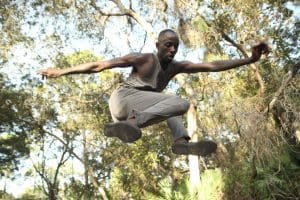 FA: What have you been observing to draw from for the movement of your dancers?
FA: What have you been observing to draw from for the movement of your dancers?
RW: I have kept it no secret that one of my main focuses has been migrations of the folks of the African Diaspora. This may stem from searches to know my own family’s branches and migrations up north from the Mississippi Delta to Milwaukee, where I was born. My interest in various migrations has expanded and has influenced many aspects of my work. I travel quite a bit, so that I can culturally experience much of the Diaspora from the inside. But as much as I’m let in, in so many places I remain and will be an outsider in various ways. Nevertheless, what I see, experience, smell, taste, enjoy, get traumatized by… causes much stirring inside me and is processed, filtered and comes out in the movement and performances. It’s good, tough, challenging work but I wouldn’t have it another way. So, traveling is my best source material. I think it has to do with destabilizing myself enough so that I can see/experience differently, question my own perceptions, eliminate ‘judginess’ so that I can see motional ideas within cultures and be stimulated by everydayness and humanity.
Recently, I was able to revisit South Africa and Zimbabwe on holiday and was also able to return to Senegal to do some work with young choreographers. Going to these places often changes/affects me so I expect that there will be some ‘additions’, tweaks that will bubble through as we continue to develop and prepare CITIZEN for its premiere.
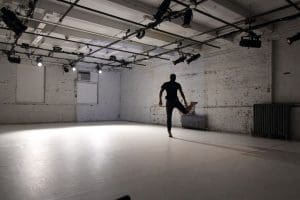 FA: What have you been discussing with your dancers?
FA: What have you been discussing with your dancers?
RW: The Rhythm. The rhythms. And also the clarity of the individual movements and phrases are really important to me. Their weight and rootedness in their pelvis are especially significant; their directions, facings. We talk about resilience, determination and how it emerges out of the repetition. Anonymity vs. a sense of community and civic duties; co-existence of contradictions, irony, dignity, freedom, the past, the present… what does it means to them personally. This stuff gets woven into the texture of the choreography and exudes implicitly and explicitly. The performers have a lot to contend with and think about; I think it’s their rigor and use of their immense skills and stamina that are making the work into a powerful dialogue.
FA: You are investigating these two ideas simultaneously: “What does it mean to belong” and “What does it mean to NOT want to belong.” What brought about this second idea joining the first?
RW: I believe it comes out of a general belief of accepting “both/and.” That’s a long story… However related to black folks (as well as many many others I am sure), the contradictory feeling of belonging somewhere or to some group then because of maltreatment also having the feeling of not wanting to belong. Why should someone want to belong where they are not wanted?
Well… I will refer back to an initial point-of-research, Zora Neale Hurston… what was it? What was the struggle, the internal and external dialogue that she must have gone through? Always coming back home. How much did she feel appreciated and yet struggle with her civic duties? And she’s not the only one. There are many artists of the Harlem Renaissance and other periods of American and world history… it’s still going on today. These are questions that many immigrants face in regards to their own homelands, not just in America. Sometimes it’s in the mind and sometimes it’s very real practical conditions that distort the mind, heart, and perceptions.
FA: Can you discuss how the work has evolved from initial idea to current rehearsals?
RW: In the studio I started by thinking about creating the movement and phrases, putting that in place before focusing on the technical production elements. Movement phrases were worked on and continue evolving to-date. This is the solid base on which other ideas can be examined and layered. I have never previously wanted to experiment with film footage/video projection in my work. Currently, I have been concerned about how to maintain the power and communication in the movement vs. the visual pull of the video. Motion seems to be a common link and theme between the two disciplines. This is in addition to balancing the core points/questions “What does it mean to belong” and “What does it mean to NOT want to belong.” My challenge is how to balance and not balance the movement and footage to make a provocative work.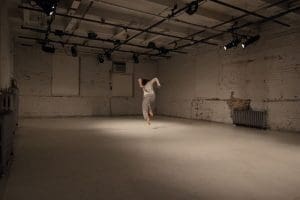
CITIZEN recently completed a full production residency where we worked on figuring out how the lights, including shadows and silhouettes, work with the projected video footage (as a lighting source itself, scaling of the images, placement(s) in the space, use of multiple angles, use of the floor and corners of space as projection surfaces) layered on top of the movement. Interesting things are emerging but of course as much as we find out, the more questions we find that we have ponder/solve.
It’s very difficult to talk in practical/direct terms about how work goes from questioning, to research to studio movement, back to ideas, to editing, to fleshing out, to performance… this is some of the beauty and possibility of the Dance.
FA: What are the aspects that you see yourself most fine tuning in CITIZEN? What do you find yourself repeating to your dancers?
RW: Use your weight; What direction is your pelvis? Think about the articulation of your???… Think about the ‘motion-ality’ and rhythm… What do you think you are doing?

